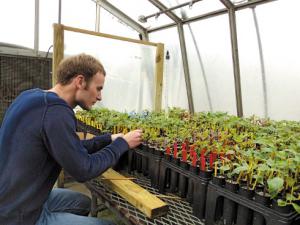ForensicsForensic botany uses plant DNA to trace crimes
Researchers are advancing the field of forensic botany with the publication of two recent studies that use marijuana DNA to link drug supplies and pollen DNA to aid in forensic investigations.

Forensic botan has been successfully used in an murder investogation // Source: vt.edu
Sam Houston State University says it is advancing the field of forensic botany with the publication of two recent studies that use marijuana DNA to link drug supplies and pollen DNA to aid in forensic investigations. In an article published in the International Journal of Legal Medicine, faculty and students from the Department of Forensic Science report that they developed a test to individualize samples of marijuana that could be used to link drugs across cases. SHSU notes that the study examined eleven cases containing a total of 199 samples from U.S. Customs and Border Protection, which included four matching genotypes indicating drugs came from the same source.
“The use of a DNA-based method for identification will allow federal law enforcement agencies (for example, U.S. Customs and Border Protection (CBP) and Drug Enforcement Administration (DEA)) to form links between cases involving the cross-border trafficking of Cannabis,” said Dr. David Gangitano, one of the authors on the study.
In a second article published in Science & Justice, researchers found that pine pollen could provide a viable source of DNA for criminal investigations. Pine pollen remains viable for DNA testing for at least two weeks on cotton clothing and can help link a suspect or victim to a location. The study examined a new collection device, a high-throughput method for DNA extraction and amplification, and a newly-developed system for genotyping.
“This study has shown that pollen can be a stable source of forensic DNA evidence, as a proof-of-principle, and that may persist on cotton clothing for at least 14 days of wear,” said Dr. Gangitano. “This method can be applied in forensic cases where pollen grains larger than 10 μm (for example, from herbs or trees) may be transferred to clothing (worn by suspect or victim) by primary contact.”
— Read more in Rachel Houston et al., “Evaluation of a 13-loci STR multiplex system for Cannabis sativa genetic identification,” International Journal of Legal Medicine (10 December 2015): 1-13 (doi:10.1007/s00414-015-1296-x); and Cassandra Schield et al., “Identification and persistence of Pinus pollen DNA on cotton fabrics: A forensic application,” Science & Justice 56, no. 1 (January 2016):29-34 (doi: 10.1016/j.scijus.2015)
